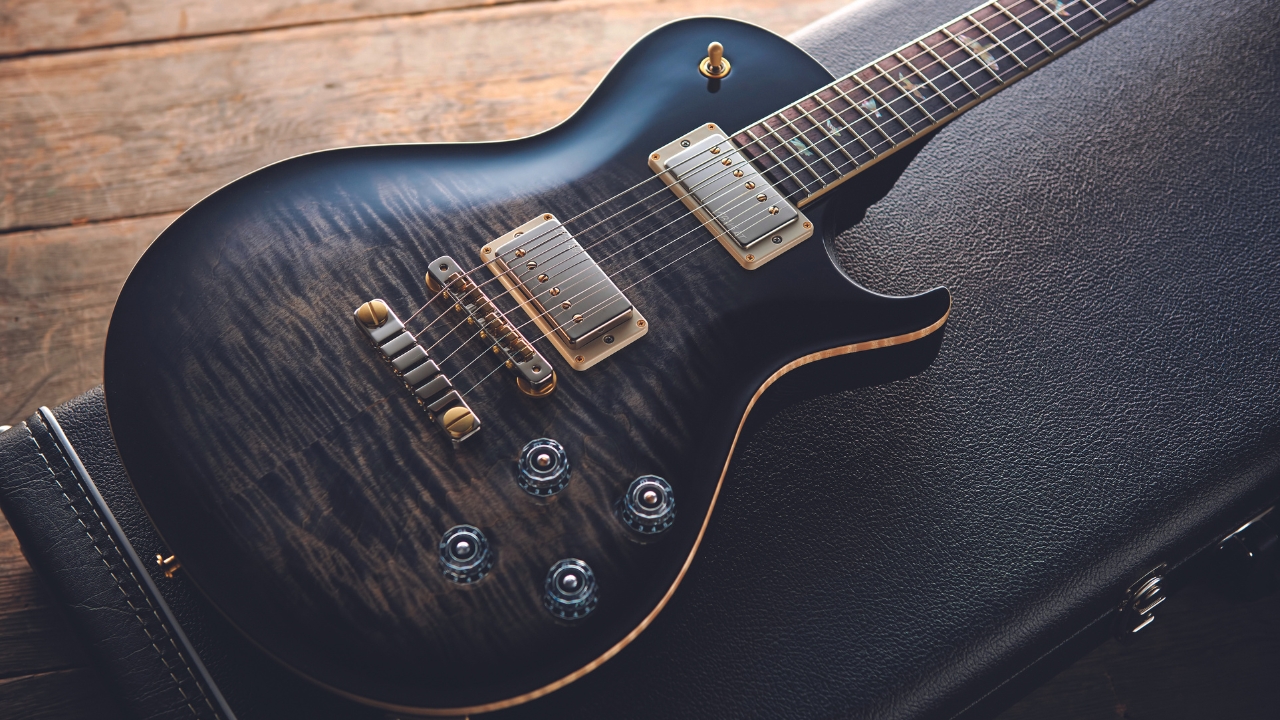“The lesser amount that the guitar shuts the string down the better the guitar is”: Paul Reed Smith explains what makes a good guitar – does yours pass his test?
There are all kinds of factors that go into making a great guitar but the PRS Guitars boss explains how telling good from bad can be as simple as taking out a stopwatch

Choosing a new electric guitar can be one of the most difficult decisions a player will make. There are so many options. But Paul Reed Smith, founder and president of PRS Guitars, has some advice that might help inform your decision. In fact, better than that, he’s got a test.
Speaking at a 2023 clinic hosted by Cosmo Music, a CosmoFEST session only recently posted to the Canadian gear retailer’s YouTube channel, Smith says that there is a very simple test that will determine whether a guitar is any good or not. Simply play an open chord – or just the open strings, Smith doesn’t specify – and put it against the clock. The sustain will tell you everything you need to know.
“A good guitar will ring about 45 seconds. A bad guitar rings about 12 seconds. You can time it with a stopwatch,” he says. “The guitar is either shutting down a string or allowing it to ring. The string wants to go nuts. You can take a really good guitar and a bad guitar and switch the strings, and it is still a really good guitar and a bad guitar. The string is trying to do its job; the guitar is shutting it down… And the lesser amount that the guitar shuts the string down the better the guitar is.”
I broke out in a cold sweat the minute he challenged me... I had never timed my guitar
Now, this test does not apply to rubber bridge guitars, where the design is all about shutting the string down for that muted lo-fi indie sound popularised by the likes of Madison Cunningham and Phoebe Bridgers, which is of course a niche proposition. But for guitars – and especially when fishing around in the high-end electric guitar market – it might be worth keeping the PRS stopwatch test in mind.
Smith says it is “subtractive”. Trebly guitars sound trebly because someone turned the bass and midrange down. Bassy guitars sound that way because the midrange and the treble has been turned down.

Of course, sharing this methodology with the general public is not without risk for a manufacturer of guitars, as Smith found out during a similar session at Chicago Music Exchange, sharing this theory in the context of vintage Les Pauls and Stratocasters. The problem is, those stopwatches can be used to time any guitar, including his. Was he up to the challenge?
“This guy gets up in the middle of the room and goes, ‘All right, hot-shot. We think an old Les Paul is a reissue. We think an old Strat is a reissue. We’ve never played a real one. We don’t know what you’re talking about,’” says Smith, with the gentleman in question issuing a challenge.
Want all the hottest music and gear news, reviews, deals, features and more, direct to your inbox? Sign up here.

One way or another Smith was going to have to put his stopwatch where it hurt. “Get out a stopwatch, hotshot,” said the man. He wanted to time an old Strat versus a new Strat, an old Les Paul and a new Les Paul Get an old Strat, and another thing, he wanted Smith to test one of his guitars, and do it in front of them all.
“I broke out in a cold sweat the minute he challenged me because I had never timed my guitar,” says Smith. “The old Les Paul rang about 45 seconds. The new one range about 17 seconds. The old Strat rang about 47, 48 seconds. The new one rang about 17 or 18 seconds, and the PRS lasted 48 seconds, so it was okay.”

Smith has another test, and this one is for the retailers, and all those working in guitar stores the world over. If you have a customer in the shop and they can’t decide which guitar they’d rather buy, it’s time to play catch. It’s a high-risk sales tactic, perhaps not for the novice sales assistant, but it gets results.
“If they start screaming when you are playing catch with one of the guitars that’s the one they want,” he says. “It’s true! It happened to me. We were in Florida and this guy goes, ‘I just can’t decide if I love this guitar or not.’ And [former PRS sales rep] Jim Greenhill said, ‘Back up, Paul!’ And we started chucking it, and he started screaming; his credit card came out so fast it was unbelievable! Now we’ve done the opposite, we’ve started throwing it and the person has no reaction whatsoever. They don’t buy it.”
Back to the stopwatch, there is a risk with this test. What if you time your beloved guitar and it doesn’t make it past the 15 second mark? The stopwatch might offer hard facts about your guitar’s sustain but it can’t be the whole story. Even so, a battered Player Series Telecaster is feeling mighty uncomfortable right now. So is its owner. Our advice: don't let the stopwatch get in the way of a healthy relationship with your instrument.
Jonathan Horsley has been writing about guitars and guitar culture since 2005, playing them since 1990, and regularly contributes to MusicRadar, Total Guitar and Guitar World. He uses Jazz III nylon picks, 10s during the week, 9s at the weekend, and shamefully still struggles with rhythm figure one of Van Halen’s Panama.
